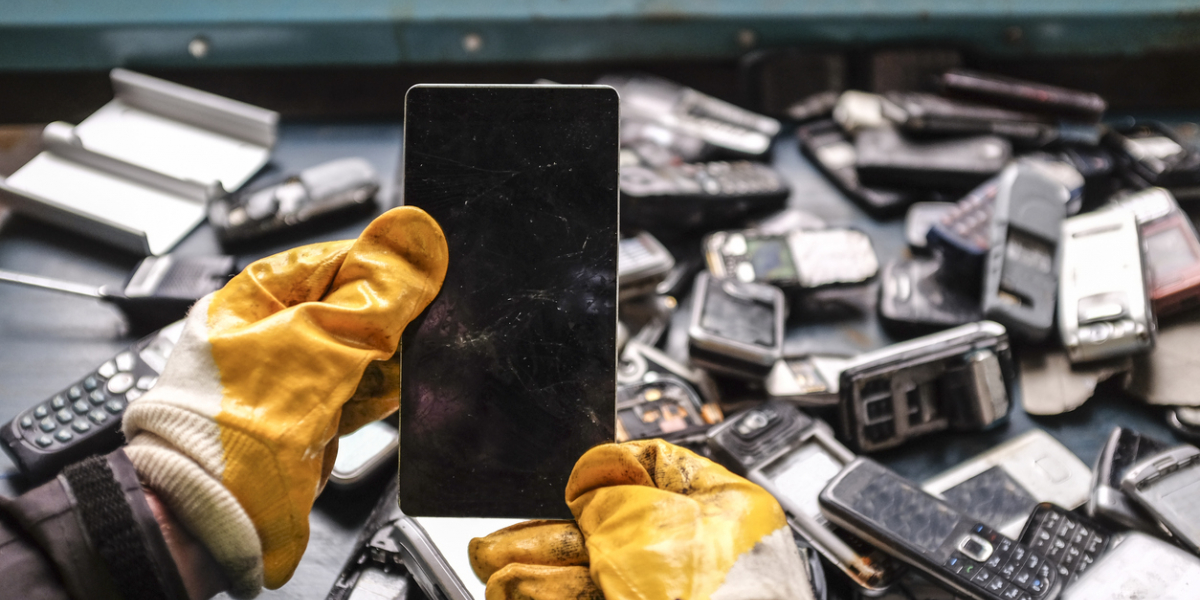
September 11 2018
Guest post by Justine Beaulé
This is the second blog in a two-part series focused on the durability of electronics. Product durability is a key aspect of achieving a circular economy. Lengthening a product’s useful life decreases overall resource use, waste, and can save consumers money by minimizing the rate of product replacement. The first blog made the case for pursuing durability even in a rapidly changing sector like the smartphone industry.
Why aren’t smartphones durable?
Apple has often been accused of designing obsolescence into their products with the goal of increasing consumers’ product replacement rate. This theory, known as planned obsolescence, is difficult to prove as producers can argue it is an unintentional side-effect of design/material decisions. Apple claimed that the battery was responsible for a slowdown of older iPhone models in 2017, reducing the cost of battery replacements from US$79 to $29 to appease consumers. As a business strategy, this is a race to the bottom, as purposefully debasing your products will, in the long run, result in a loss of consumer loyalty. Nonetheless, there remains an economic drive for obsolescence in the smartphone industry, one which is characterized by stagnant consumer expectations of product longevity and a lack of counterbalancing regulations and policies that promote product durability.
What are tech giants currently doing to enhance product durability?
Apple’s current durability efforts focus almost exclusively on recycling. Their iPhone Upgrade Program, which conditions consumers to repetitively replace their smartphones for the latest model, supplies Apple’s refurbished iPhone market. Their refurbishment efforts ultimately fail to make significant environmental gains as both the primary and secondary lives of the smartphones remain excessively short. Furthermore, Apple’s collection program, Renew, predominantly recycles returned smartphones. It also requires direct product return to Apple, therefore failing to capture products that end up at e-waste collection sites. It offers Apple gift cards at prices that are below what the devices are worth on the open market, providing little incentive for consumers to recycle through Apple. Once collected, Apple actively discourages product reuse and refurbishment by forcing recyclers to shred iPhones and MacBooks down to shards of metal and glass.
Looking to more durable designs.
Modularity is the best design strategy to create a truly upgradeable smartphone and improve ease of disassembly. Greater ease of disassembly, coupled with more durable components, can lower costs of ‘production’ for refurbished goods, creating a greater profit margin than selling new products. Demand for refurbished goods exists - consumers are generally willing to pay for refurbished products if sold from reputable retailers. A significant barrier to development of a second-life market is the difficulty tech giants face in recapturing the added value of enhanced durability as they do not have a monopoly over remanufacturing and repair industries. This creates a split incentive for redesigning products to favour reuse/refurbishment over recycling/disposal.
What are best practices to improve smartphone durability?
Best practices to promote durability in the tech industry, as proposed by the European Union, are to:
The Canadian environmental label, EcoLogo, sets criteria for the lifetime of mobile phones, but fails to set minimum product warranties, requirements for ongoing access to software updates and requirements on battery lifetime. Moreover, every environmental label with mobile phone criteria notably fails to address upgradeability, which is a main driver for smartphone replacement.
Product durability could be well communicated through a product lifecycle index. Creating one would require the development of product-specific methodologies to measure product durability along with test standards to validate the findings. From these, compulsory requirements on product lifetime could be set. Owing to the complexity of creating such methodologies and standards, there are currently no such indexes in existence.
Given that consumers often base their expectation of product lifetime on the length of manufacturer warranties, extended warranties are a good strategy to address low consumer expectations of product lifetimes. Both France and Norway have adopted extended warranties, the latter finding that it helped delay product disposal. Reducing repair costs is also important, given that they may be high enough to promote replacement over repair (an iPhone X screen replacement costs $359).
Of all the approaches to promoting durability, those that focus on strengthening consumer protection are often the most successful and popular. Developing a reproducible approach to enhancing the durability of products with high rates of innovation will become increasingly important as Canada transitions towards a circular economy.
For more on the Circular Economy, check out our Policy Brief on Getting to a Circular Economy. For more on Household Waste, read our Policy Brief on Economic Tools to Reduce Household Waste.